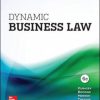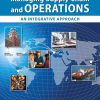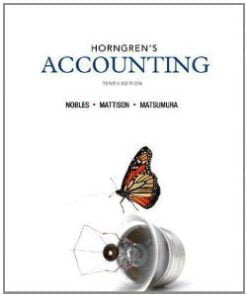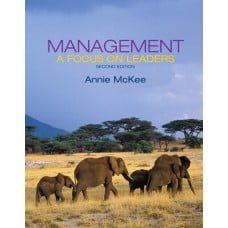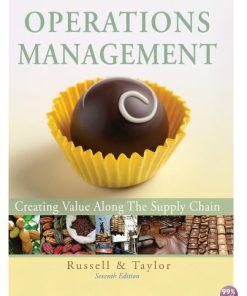Disaster Recovery 2nd Phillips Solution Manual
$35.00 Original price was: $35.00.$26.50Current price is: $26.50.
Disaster Recovery 2nd Phillips Solution Manual
Disaster Recovery 2nd Phillips Solution Manual
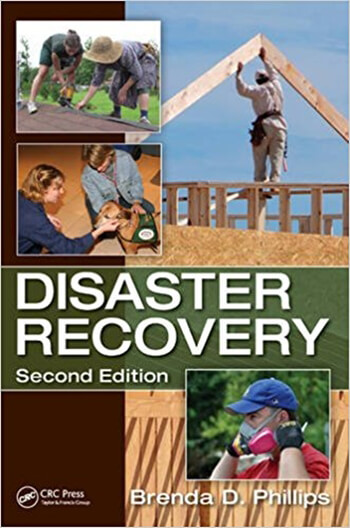
Product details:
- ISBN-10 : 1466583843
- ISBN-13 : 978-1466583849
- Author: Brenda D. Phillips, PhD
Since the publication of the first edition of Disaster Recovery, a number of important new studies and guides have become available. Now revised, updated, and expanded, this second edition meets the high standards for providing evidence-based best practices in a user-friendly textbook set by its predecessor. It is also more international in scope, incorporating case studies from around the world, including coverage of the Haiti earthquake of 2010, the Japanese tsunami of 2011, and overseas recovery practices.
Table contents:
- Chapter 1 Introduction
- 1.1 Learning Objectives
- 1.2 Key Terms
- 1.3 Introduction
- 1.3.1 SuperStorm Sandy
- 1.4 Defining Disaster Recovery
- 1.4.1 Defining the Recovery Phase
- BOX 1.1 COMPREHENSIVE EMERGENCY MANAGEMENT AND THE FOUR PHASES
- 1.4.2 Recovery as a Process
- 1.5 Hazards and Their Consequences for Disasters
- 1.5.1 Natural Hazards
- 1.5.1.1 Flooding
- BOX 1.2 THE WINTER OF 2013–2014 IN THE UNITED STATES
- PHOTO 1.1 Moorhead, MN, March 29, 2009—Minnesota Air National Guard dealing with ice from winter storms along the Red River.
- PHOTO 1.2 Snow cover in the United States, late winter 2014.
- BOX 1.3 LAUNCHING RECOVERY IN THE UNITED STATES
- PHOTO 1.3 Queens, NY—Department of Homeland Security Secretary Janet Napolitano and staff, SuperStorm Sandy, New York Joint Field Office.
- 1.5.1.2 Storms
- TABLE 1.1 Saffir–Simpson Hurricane Scale
- FIGURE 1.1 USAID and other organizations worked diligently to distribute aid after a typhoon struck the Philippines.
- TABLE 1.2 Enhanced Fujita Scale for Tornadoes
- BOX 1.4 BOXED FEATURE: HURRICANE KATRINA UPDATE
- 1.5.1.3 Earthquakes
- 1.5.2 Terrorism
- 1.5.3 Hazardous Materials
- 1.5.4 Humanitarian Disasters
- PHOTO 1.4 Cyclone Nargis, May 2, 2008.
- 1.6 Disaster Resilience
- 1.7 Summary
- 1.8 End-of-Chapter Questions
- 1.8.1 Summary Questions
- 1.8.2 Discussion Questions
- References and Recommended Reading
- Resources
- Chapter 2 Conceptual, Theoretical, and Practical Approaches to Disaster Recovery
- 2.1 Learning Objectives
- 2.2 Key Terms
- 2.3 Introduction
- 2.3.1 The Haiti Earthquake 2010
- FIGURE 2.1 Significant levels of aid came from many organizations and agencies after the 2010 Haiti earthquake.
- 2.4 Why Theory?
- 2.4.1 Systems Theory
- BOX 2.1 OVERVIEW OF KEY THEORETICAL IDEAS
- FIGURE 2.2 Systems theory. A misfit between the three systems (physical, human, and built) can result in a disaster that damages some or all of the systems.
- 2.4.2 Vulnerability Theory
- BOX 2.2 THE INDIAN OCEAN TSUNAMI OF 2004
- 2.4.3 Sociopolitical Ecology Theory
- 2.4.4 Feminist Theory
- BOX 2.3 FEMINIST PERSPECTIVES ON RECOVERY
- 2.4.5 Emergent Norm Theory
- PHOTO 2.1 Veterinary medical response teams assist survivors after SuperStorm Sandy in Rockaway, NY.
- 2.5 Toward a Sustainable Recovery
- 2.5.1 A Participatory Process
- 2.5.2 Quality of Life
- 2.5.3 Economic Vitality
- 2.5.4 Social and Intergenerational Equity
- PHOTO 2.2 FEMA’s National Flood Insurance Program conducts outreach in Vega Alta, Puerto Rico.
- 2.5.5 Environmental Quality
- 2.5.6 Disaster Resilience
- 2.5.7 Practical Considerations of a Sustainable Approach
- 2.6 Summary
- 2.7 End-of-Chapter Questions
- 2.7.1 Summary Questions
- 2.7.2 Discussion Questions
- References and Further Readings
- Resources
- Chapter 3 Disaster Recovery Planning
- 3.1 Learning Objectives
- 3.2 Key Terms
- 3.3 Introduction
- 3.4 Damage Assessment
- TABLE 3.1 Challenges of Conducting PDA
- PHOTO 3.1 Fajardo, Puerto Rico. FEMA participates in damage assessment after Tropical Storm Irene in 2011.
- BOX 3.1 HAITI DAMAGE ASSESSMENT AND RECOVERY PLAN
- 3.5 Getting Started with Planning
- 3.5.1 Key Planning Principles
- PHOTO 3.2 Recovery provides a chance to teach about mitigation through children’s activity books and materials.
- 3.5.2 Leadership
- 3.5.3 Coordination and Communication
- BOX 3.2 HIRING A RECOVERY CONSULTANT
- 3.5.4 Planning as a Process
- BOX 3.3 RECOVERY AS A PROCESS
- 3.5.5 Stakeholders and Participants
- 3.5.5.1 Community Involvement and Inclusiveness
- BOX 3.4 VOICES FROM THE VOICELESS
- 3.5.5.2 External Partners
- 3.6 Recovery Planning
- 3.6.1 Case Study: Los Angeles, California
- 3.6.2 Linking to Non-disaster Planning
- 3.6.3 Short-Term Recovery Planning
- 3.6.3.1 Emergency Measures
- 3.6.3.2 Preplanned Ordinances
- 3.6.4 Long-Term Recovery Planning
- 3.6.4.1 Housing
- BOX 3.5 U.S. NATIONAL DISASTER RECOVERY FRAMEWORK
- PHOTO 3.3 Rumson, NJ. Residents affected by SuperStorm Sandy discuss ideas and concerns on vision boards for their community.
- 3.6.4.2 Business
- 3.6.4.3 Environmental Resources
- 3.6.4.4 Historic and Cultural Resources
- 3.6.4.5 Infrastructure
- 3.6.4.6 Social and Psychological Recovery
- 3.6.4.7 Public Sector Recovery
- 3.7 Summary
- 3.8 End-of-Chapter Questions
- 3.8.1 Summary Questions
- 3.8.2 Discussion Questions
- References and Recommended Readings
- Resources
- Chapter 4 Debris Management
- 4.1 Learning Objectives
- 4.2 Key Terms
- 4.3 Introduction
- PHOTO 4.1 Oregon State Parks photo.
- 4.4 Debris Challenges
- 4.4.1 Types of Debris
- 4.4.2 Floods
- TABLE 4.1 Hazard-Specific Debris
- 4.4.3 Tornadoes
- PHOTO 4.2 Debris field from an EF-5 Tornado June 4, 2011, in Joplin, MO.
- 4.4.4 Hurricanes
- PHOTO 4.3 Recycling efforts at the Sea Girt (New Jersey) Pavilion reused from the destroyed boardwalk to build new pathways.
- 4.4.5 Earthquakes
- 4.4.6 Wildfire
- 4.4.7 Hazardous Materials
- 4.4.8 Terrorism
- 4.5 Debris Estimation
- 4.5.1 Before the Disaster
- TABLE 4.2 Debris Pile Calculations
- 4.5.2 After the Disaster
- 4.6 Problems Specific to Debris
- 4.6.1 The Human Dimension
- 4.6.2 Landfills
- PHOTO 4.4 Alakanuk, AK, July 16, 2013—Flood debris fills the Alakanuk, AK garbage dump due to damage to the community’s trash delivery system.
- 4.6.3 Geography
- 4.6.4 Work Crews and Safety
- 4.7 Debris Management Planning
- BOX 4.1 HEALTH EFFECTS OF SEPTEMBER 11
- BOX 4.2 WORKER SAFETY AND HEALTH CONSIDERATIONS
- BOX 4.3 DEBRIS MANAGEMENT PLANNING CHECKLIST
- 4.7.1 The Cycle of Debris Management Planning
- BOX 4.4 LEGAL ISSUES
- BOX 4.5 ESF #3 IN THE UNITED STATES
- 4.7.2 Initial Response
- 4.7.3 Debris Recovery and Operations
- 4.7.4 Public Education Campaigns
- 4.8 Debris Reduction Methods
- 4.8.1 Recycling
- TABLE 4.3 Recycling Opportunities after Disaster
- 4.8.2 Reusing
- 4.8.3 Incineration
- PHOTO 4.5 An air curtain incinerator is used to reduce volume from hurricane in Crowley, LA.
- 4.8.4 Grinding and Chipping
- 4.9 Debris Management Sites
- 4.9.1 Temporary Sites
- PHOTO 4.6 The Breezy Point, New York area, is closed to allow for the U.S. Army Corps of Engineers to manage temporary debris.
- BOX 4.6 TEMPORARY DEBRIS STORAGE AND REDUCTION SITES (TDSR) CRITERIA
- 4.9.2 Permanent Sites: Landfills
- 4.10 Summary
- 4.11 End-of-Chapter Questions
- 4.11.1 Summary Questions
- 4.11.2 Discussion Questions
- References and Recommended Readings
- Resources
- Chapter 5 Environmental Recovery
- 5.1 Learning Objectives
- 5.2 Key Terms
- 5.3 Introduction
- PHOTO 5.1 Chalmette, LA. Hurricane Katrina led to oil spills in neighborhoods.
- PHOTO 5.2 Boothville, LA. Hurricanes can damage not only homes but also fishing industries.
- PHOTO 5.3 Jefferson Parish, LA. An oiled pelican is rescued through partnerships with federal agencies.
- 5.3.1 Japanese Earthquake, Tsunami, Nuclear Accident, 2011
- 5.3.2 SuperStorm Sandy in Bayshore, NJ
- 5.4 Approaches to Environmental Recovery
- 5.4.1 Sustainability
- BOX 5.1 LINKING RESEARCH WITH PRACTICE TO PROMOTE SUSTAINABILITY
- 5.4.2 Holistic Environmental Recovery
- BOX 5.2 ZERO ENERGY HOMES
- PHOTO 5.4 Chenier Plain, TX. Anahuac National Wildlife Refuge being rebuilt by volunteers after Hurricane Ike.
- 5.4.3 Rebuilding Green
- 5.5 Strategies and Tools for Environmental Recovery
- 5.5.1 Environmental Rescue
- BOX 5.3 LONG-TERM RECOVERY FROM HAZARDOUS MATERIALS
- PHOTO 5.5 Pensacola, FL. Hurricane Dennis injures wildlife rescued by environmental advocacy partners.
- 5.5.2 Environmental Protection
- 5.5.3 Environmental Conservation
- 5.5.4 Environmental Restoration
- BOX 5.4 TREE CANOPY BENEFITS
- 5.6 Environmental Partners
- 5.6.1 Governmental Partners
- BOX 5.5 LEGAL MANDATES AND ENVIRONMENTAL RECOVERY IN THE UNITED STATES
- 5.6.2 Environmental Advocates
- BOX 5.6 THE LOWLANDER CENTER, UNITED STATES
- PHOTO 5.6 Working together toward environmental recovery.
- BOX 5.7 VULNERABLE POPULATIONS AND ENVIRONMENTAL RECOVERY
- Flooding and Children
- Flooding and Native Americans
- PHOTO 5.7 Solar Under the Sun Project to use solar power to fuel a water treatment plant, Haiti.
- PHOTO 5.8 Solar Under the Sun, Haiti.
- 5.7 Summary
- 5.8 End-of-Chapter Questions
- 5.8.1 Summary Questions
- 5.8.2 Discussion Questions
- References and Recommended Readings
- Resources
- Chapter 6 Historic and Cultural Resources
- 6.1 Learning Objectives
- 6.2 Key Terms
- 6.3 Introduction
- 6.3.1 The Hawke’s Bay Earthquake of 1931, New Zealand
- 6.4 Defining Historic Property and Cultural Resources
- 6.4.1 Historic Properties
- 6.4.2 Cultural Resources
- 6.4.3 World Heritage Sites
- 6.5 Importance of Historic “Places”
- 6.5.1 Meanings of Places
- BOX 6.1 THE ST. GEORGE HOTEL, SANTA CRUZ, CA
- PHOTO 6.1 Photo (a) shows the efforts to inspect the Washington Monument after an earthquake. Photo (b) shows damage to the historic structure.
- BOX 6.2 HARPER’S FERRY
- 6.5.2 Economic Importance of Historic Places and Cultural Resources
- PHOTO 6.2 Tornado damage from Andrew Jackson’s home near Nashville, The Hermitage.
- 6.6 Challenges and Opportunities after Disaster
- BOX 6.3 THE OKLAHOMA CITY BOMBING
- 6.7 Resources for Historic Properties and Cultural Resources
- 6.7.1 Pre-Disaster Response and Recovery Planning
- 6.7.2 National, State, and Tribal Resources
- BOX 6.4 THE NATIONAL HISTORIC PRESERVATION ACT AND DISASTER RECOVERY
- 6.7.3 Funding
- 6.7.4 World Heritage Sites
- 6.8 Mitigation for Historic Properties and Cultural Resources
- TABLE 6.1 Milton, Pennsylvania
- 6.8.1 FEMA’s Mitigation Strategy for Historic Properties and Cultural Resources
- 6.8.1.1 Step One
- 6.8.1.2 Step Two
- BOX 6.5 SEPTEMBER 11, 2001
- 6.8.1.3 Step Three
- 6.8.1.4 Step Four
- BOX 6.6 SAVING YOUR FAMILY’S TREASURES
- PHOTO 6.3 Wildfire threatened a historic Georgia property in 2007, which firefighters protected with an exterior wrap and an emergency sprinkler system.
- Before disaster
- After disaster
- 6.9 Summary
- 6.10 End-of-Chapter Questions
- 6.10.1 Summary Questions
- 6.10.2 Discussion Questions
- References and Recommended Readings
- Resources
- Chapter 7 Housing
- 7.1 Learning Objectives
- 7.2 Key Terms
- 7.3 Introduction
- 7.3.1 Pass Christian, MS, and Hurricane Katrina
- PHOTO 7.1 Pass Christian, MS. A partnership between a civic club and faith-based organization produces an elevated home.
- 7.4 Challenges in Housing Recovery
- BOX 7.1 PERMANENT RELOCATIONS AFTER DISASTER
- Resistance to Relocations
- TABLE 7.1 Missouri Buyouts
- Resistance to Relocation: Princeville, NC*
- Making Relocation Work
- 7.5 Housing Recovery Models
- 7.5.1 The Redevelopment Model
- 7.5.2 The Capital Infusion Model
- PHOTO 7.2 Transitional shelters being constructed in Port-au-Prince, Haiti.
- 7.5.3 The Limited Intervention Model
- 7.5.4 The Market Model
- 7.6 Types of Post-Disaster Shelter and Housing
- FIGURE 7.1 Phases of sheltering and housing.
- 7.6.1 Emergency Shelter
- PHOTO 7.3 New Orleans overpass, Hurricane Katrina, 2005.
- 7.6.2 Temporary Shelter
- 7.6.3 Temporary Housing
- 7.6.3.1 Rental Units
- 7.6.3.2 Mobile Homes and Travel Trailers
- PHOTO 7.4 Joplin, Missouri, FEMA Trailer Park.
- 7.6.3.3 Congregate Care Facilities
- 7.6.4 Permanent Housing
- 7.6.4.1 Renters
- 7.6.4.2 Homeowners
- FIGURE 7.2 Homeowner return process.
- FIGURE 7.3 FEMA and USACE recommendations for debris removal.
- 7.7 Challenges for Socially Vulnerable Populations
- 7.7.1 Addressing Unmet Needs
- BOX 7.2 RETURNING HOME FOR PEOPLE WITH DISABILITIES
- 7.7.2 Disaster Case Management
- BOX 7.3 NATIONAL VOLUNTARY ORGANIZATIONS ACTIVE IN DISASTER POINTS OF CONSENSUS DISASTER CASE MANAGEMENT
- BOX 7.4 NATIONAL VOLUNTARY ORGANIZATIONS ACTIVE IN DISASTER
- 7.8 The Role of the U.S. Government in Housing Recovery
- 7.8.1 The Role of the U.S. Federal Government
- 7.8.2 The Role of the State in the United States
- BOX 7.5 U.S. NATIONAL DISASTER HOUSING STRATEGY
- 7.8.3 The Role of the Local Government in the United States
- BOX 7.6 HOLISTIC RECOVERY FOR HOUSING
- BOX 7.7 MITIGATION
- Hazard Specific Mitigation Practices
- 7.9 Summary
- 7.10 End-of-Chapter Questions
- 7.10.1 Summary Questions
- 7.10.2 Discussion Questions
- References and Recommended Readings
- Resources
- Chapter 8 Business Recovery
- 8.1 Learning Objectives
- 8.2 Key Terms
- 8.3 Introduction
- 8.3.1 September 11
- 8.4 Conditions That Influence Business Recovery
- 8.4.1 Preparedness
- 8.4.2 Business Size and Type
- 8.4.3 Location
- PHOTO 8.1 Earthquake damage in Pioneer Square, Seattle, WA, 2001.
- 8.4.4 Magnitude of the Impact
- 8.4.5 Indirect Damage
- 8.4.6 Prior Disaster Experience
- PHOTO 8.2 Hurricane Irene damages main streets and businesses in 2011.
- 8.4.7 Good News
- PHOTO 8.3 Mitigation efforts to support homeowners and businesses in Arecibo, Puerto Rico.
- 8.5 Key Concepts for Business Recovery
- 8.5.1 Loss Estimation
- BOX 8.1 LOSS ESTIMATION AND CALCULATION
- 8.5.2 Loss Containment
- 8.5.3 Downtime
- 8.5.4 Displacement
- BOX 8.2 SEPTEMBER 11, 2001, IN NEW YORK CITY
- 8.5.5 Human Resources
- 8.6 Strategies for Business Recovery
- 8.6.1 Business Continuity Planning
- FIGURE 8.1 Business continuity organizational structure.
- 8.6.2 Community-Based Recovery Planning
- 8.6.3 Planning for a Green Business Recovery
- 8.7 Funding Business Recovery
- 8.7.1 U.S. Small Business Administration
- BOX 8.3 GREEN RECOVERY FOR SMALL BUSINESSES
- 8.7.2 National Trust’s Main Street Program
- PHOTO 8.4 The Small Business Administration provides loan assistance in Alabama, 2011.
- 8.7.3 Micro-loans
- 8.8 Summary
- 8.9 End-of-Chapter Questions
- 8.9.1 Summary Questions
- 8.9.2 Discussion Questions
- References and Recommended Readings
- Resources
- Chapter 9 Infrastructure and Lifelines
- 9.1 Learning Objectives
- 9.2 Key Terms
- 9.3 Introduction
- 9.3.1 Geomagnetic Storms
- BOX 9.1 CYBERVULNERABILITY
- 9.4 Social Impacts of Infrastructural and Utility Damage
- 9.5 Impacts of Disaster on Infrastructure and Lifelines
- TABLE 9.1 America’s Infrastructure 2013: Report Card
- 9.5.1 Roads
- 9.5.2 Public Transit
- 9.5.3 Bridges
- PHOTO 9.1 Minneapolis, MN. The I-35 bridge collapse in 2007.
- PHOTO 9.2 Delhi, IA. Dam failure after a heavy rainfall, 2010.
- 9.5.4 Dams
- 9.5.5 Ports, Airports, and Waterways
- 9.5.6 Communications
- 9.5.7 Water and Wastewater
- 9.5.8 Electricity
- PHOTO 9.3 Hoboken, NJ. SuperStorm Sandy damages water and sewer lines.
- PHOTO 9.4 Bayboro, NC. Hurricane Irene downs power poles.
- 9.6 Damage Assessment and Short-Term Recovery
- 9.6.1 Short-Term Recovery Efforts
- FIGURE 9.1 Civil Defence and Emergency Management Groups cover both islands of New Zealand, under legal authority from national legislation.
- 9.6.2 Long-Term Recovery Principles
- 9.7 Mitigating Future Risks
- TABLE 9.2 Mitigation Measures for Specific Hazards
- 9.8 Summary
- TABLE 9.3 Mitigation Measures for Infrastructure and Utilities
- 9.9 End-of-Chapter Questions
- 9.9.1 Summary Questions
- 9.9.2 Discussion Questions
- References and Recommended Readings
- Resources
- Chapter 10 Social Psychological Recovery
- 10.1 Learning Objectives
- 10.2 Key Terms
- 10.3 Introduction
- 10.3.1 September 11
- 10.3.2 The Westgate Mall, Nairobi, Kenya
- 10.4 Psychological Impacts of Disasters
- 10.4.1 Age
- BOX 10.1 PSYCHOLOGICAL RECOVERY FROM TERRORISM
- Children and the Oklahoma City Bombing
- First Responders
- 10.4.2 Gender
- BOX 10.2 WOMEN AND GIRLS IN DISASTER: VULNERABILITY AND RESILIENCE
- What Can Be Done?
- 10.4.3 Race and Ethnicity
- 10.4.4 Occupation
- 10.4.5 Collective Loss
- 10.5 Factors Influencing Psychological Recovery
- 10.5.1 Natural versus Technological Disasters and Terrorism
- 10.5.2 Magnitude and Scope of the Disaster
- 10.5.3 Mass Fatalities and the Missing
- 10.5.4 Preexisting Conditions and Traumas
- 10.5.5 The Recovery Process
- 10.6 Barriers to Psychological Recovery
- 10.6.1 Stigma
- 10.6.2 Cost
- 10.6.3 Time
- BOX 10.3 CAMP NOAH
- PHOTO 10.1 Saint Paul, MN. Campers provide peer comfort after a difficult disaster experience.
- PHOTO 10.2 Saint Paul, MN. Campers benefit from creative crafts that help them to process their disaster experiences.
- 10.7 Becoming More Resilient to Disasters
- 10.7.1 Develop Social Networks
- 10.7.2 Educate Yourself
- 10.7.3 Prepare
- 10.7.4 Practice Mental Health
- 10.7.5 Personal Fitness and Nutrition
- 10.7.6 Volunteer
- 10.8 Post-disaster Recovery from Psychological Trauma
- 10.8.1 Critical Incident Stress Debriefing
- BOX 10.4 COPING WITH AND REBOUNDING FROM DISASTER
- 10.8.2 Other Types of Debriefing
- 10.8.3 Support Groups
- PHOTO 10.3 Biloxi, MS. K-9 Chaplain Georgia visits with federal and state workers affected by Hurricane Katrina.
- 10.8.4 Spiritual Care
- PHOTO 10.4 Moore, OK. A chaplain with Southern Baptist Disaster Relief provides support near a school memorial.
- 10.8.5 Community Memorials
- PHOTO 10.5 Joplin, MS. A formal memorial plaque honors those who died in the EF5 tornado of 2011.
- 10.9 Summary
- 10.10 End-of-Chapter Questions
- 10.10.1 Summary Questions
- 10.10.2 Discussion Questions
- References and Recommended Readings
- Resources
- Chapter 11 Public Sector Recovery
- 11.1 Learning Objectives
- 11.2 Key Terms
- 11.3 Introduction
- 11.3.1 2011 Tornado Outbreak in the United States
- BOX 11.1 HEALTH CARE FACILITIES
- BOX 11.2 DISASTER-RESISTANT UNIVERSITIES AND SCHOOLS
- PHOTO 11.1 Joplin, MO. St. John’s Regional Medical Center.
- PHOTO 11.2 Joplin, MO. St. John’s mobile hospital tent units in use after the hospital sustained major damage.
- PHOTO 11.3 Cameron Parish, LA. Hospital facility elevated for storm surge.
- 11.3.2 Emergency Managers and EOCs
- PHOTO 11.4 Moore, OK. Plaza Towers Elementary School memorial.
- PHOTO 11.5 Jackson, MS. Mississippi Emergency Management Agency EOC.
- 11.3.3 Impacts of Disasters on Public Staff
- BOX 11.3 EMERGENCY OPERATIONS CENTERS—MITIGATING RISK
- Primary EOC
- Alternate EOC
- 11.3.4 Education and Training
- 11.4 Roles of Government in Disaster Recovery
- 11.4.1 Leadership
- 11.4.2 Communication
- 11.4.3 Dealing with Change and Ambiguity
- 11.4.4 Political Will
- 11.4.5 Building Resilience
- PHOTO 11.6 Plaquemines Parish, LA. A government building elevated and with storm panels to withstand winds up to 120 mph.
- 11.5 Approaches to Governmental Leadership
- PHOTO 11.7 Pass Christian, MS. Hurricane Katrina damaged tree carved into public art, in front of a temporary library.
- 11.6 Key Governmental Resources
- 11.6.1 Financing Recovery
- BOX 11.4 OVERCOMING THE CHALLENGES
- 11.6.2 Legal and Accounting Staff
- 11.6.3 Private Sector
- 11.6.4 Long-Term Recovery Committees
- 11.6.5 Governmental Partners
- BOX 11.5 POLITICAL FALLOUT
- 11.7 Summary
- 11.8 End-of-Chapter Questions
- 11.8.1 Summary Questions
- 11.8.2 Discussion Questions
- References and Recommended Readings
- Resources
- Chapter 12 Donations
- 12.1 Learning Objectives
- 12.2 Key Terms
- 12.3 Introduction
- PHOTO 12.1 West Virginia. Pet food donations for SuperStorm Sandy are managed by the West Virginia Air National Guard.
- 12.4 Understanding the Problem of Donations
- 12.4.1 Conceptualizing Donation Behavior
- 12.4.2 Motivations to Donate
- FIGURE 12.1 The problem of unsolicited donations.
- 12.5 Challenges Associated with Donations
- 12.5.1 Unanticipated Donations
- 12.5.2 Organizing Donations
- 12.5.3 Storing Donations
- 12.5.4 Donations for Long-Term Recovery
- BOX 12.1 MANAGING MASSIVE DONATIONS IN OKLAHOMA
- 12.6 Encouraging Financial Donations
- PHOTO 12.2 Eatontown, NJ. Donations to a local SPCA for pets affected by SuperStorm Sandy.
- BOX 12.2 ANTICIPATING DONATIONS NEEDS
- 12.7 Donations Management Planning
- 12.7.1 Ten Key Principles
- PHOTO 12.3 Long Beach Island, NJ. Donations Center for SuperStorm Sandy.
- FIGURE 12.2 Donations management flow process.
- PHOTO 12.4 Concord, AL. Sorting donations after a tornado.
- 12.7.2 Educating the Public about Donations
- 12.8 Donations Accountability
- 12.8.1 Accountability and Stewardship
- 12.8.1.1 Managing Solicited and Unsolicited Donations
- BOX 12.3 HOW TO FIND A TRUSTWORTHY CHARITY
- 12.8.1.2 Building Accountable Relationships for Long-Term Recovery
- 12.8.1.3 Qualifying Recipients
- BOX 12.4 COMPENSATING SURVIVORS AFTER DISASTERS
- 12.9 Summary
- BOX 12.5 INTERNATIONAL HUMANITARIAN AID BEST PRACTICES
- 12.10 End-of-Chapter Questions
- 12.10.1 Summary Questions
- 12.10.2 Discussion Questions
- References and Recommended Readings
- Resources
- Chapter 13 Community Resources
- 13.1 Learning Objectives
- 13.2 Key Terms
- 13.3 Introduction
- 13.4 Defining Community
- BOX 13.1 RECOVERY IN NEW ZEALAND
- BOX 13.2 KNOW YOUR COMMUNITY
- 13.4.1 Shared Locations
- 13.4.2 Shared Experiences
- PHOTO 13.1 Eagle, AL. Mennonite Disaster Service volunteers rebuild a fish wheel for a flooded community.
- 13.4.3 Sector-Based Communities
- 13.4.4 Myth of a Single Community
- 13.5 Social Capital
- 13.5.1 Bonding Social Capital
- 13.5.2 Bridging Social Capital
- 13.5.3 Linking Social Capital
- 13.5.4 Structural Social Capital
- 13.5.5 Cognitive Social Capital
- 13.6 Engaging Communities
- BOX 13.3 OPTIONS FOR ENHANCING COMMUNITY PARTICIPATION
- 13.6.1 Engaging People Effectively: Your Role as a Recovery Leader
- BOX 13.4 WHOSE PERSPECTIVE?
- 13.6.2 Engaging Communities: Overcoming Challenges and Barriers
- 13.6.2.1 Information Dissemination
- PHOTO 13.2 Providing information in local languages aids participation among survivors.
- BOX 13.5 THE WHOLE COMMUNITY
- 13.6.2.2 Issues of Daily Life
- PHOTO 13.3 SuperStorm Sandy post-disaster recovery efforts bring together volunteers civic organizations and local leaders.
- 13.6.2.3 Being Inclusive
- 13.6.2.4 Motivating Participation
- 13.7 Participatory Strategies
- 13.7.1 Moving from Consultation to Participation
- 13.7.2 Participatory Action Approach
- 13.7.2.1 Stepwise Approach to Participatory Action
- 13.7.2.2 Highlander Folk School Approach
- 13.7.2.3 Community-Based Collaboration
- FIGURE 13.1 A framework for consulting with the community.
- 13.8 Summary
- 13.9 End-of-Chapter Questions
- 13.9.1 Summary Questions
- 13.9.2 Discussion Questions
- References and Recommended Readings
- Resources
- Chapter 14 Volunteers and Voluntary Organizations
- 14.1 Learning Objectives
- 14.2 Key Terms
- 14.3 Introduction
- 14.3.1 Joplin Tornado
- 14.4 Why People Volunteer?
- PHOTO 14.1 Joplin, MS. Volunteers created this faith symbol from a tree destroyed by the EF 5 tornado.
- 14.5 Volunteers and Voluntary Organizations
- 14.5.1 Unaffiliated Volunteers
- PHOTO 14.2 New Orleans, LA. An array of organizations bring in experienced disaster volunteers to help.
- 14.5.2 Affiliated Volunteers
- 14.5.3 Disaster Voluntary Organizations
- 14.5.4 Community-Based Organizations
- BOX 14.1 VOLUNTEER HISTORY IN THE UNITED STATES
- 14.5.5 Civic Clubs and Organizations
- 14.5.6 Emergent Groups and Organizations
- 14.5.7 Who Volunteers?
- 14.6 Benefits and Challenges of Volunteer Management
- BOX 14.2 BENEFITS OF EXPERIENCED VOLUNTARY ORGANIZATIONS IN DISASTER SITUATIONS
- 14.7 Volunteering Internationally
- 14.8 Contributions of Voluntary Organizations during Disaster Recovery
- 14.8.1 Immediate Needs
- 14.8.2 Short-Term Recovery
- 14.8.3 Long-Term Recovery
- 14.9 The Voluntary Agency Liaison
- BOX 14.3 ORGANIZATIONAL STRUCTURES FOR LONG-TERM RECOVERY
- PHOTO 14.3 Joann Hale, Church World Service Emergency Response Specialist trains FEMA VALs after Hurricane Irene.
- 14.10 Managing Volunteers
- BOX 14.4 THE VOLUNTEER RECEPTION CENTER GO KIT
- 14.10.1 Volunteer Centers
- 14.10.2 Training and Placement of Volunteers
- BOX 14.5 THE IMPACT OF SEPTEMBER 11 ON VOLUNTEERS
- PHOTO 14.4 Trained Hesston College students use their skills on a disaster site.
- PHOTO 14.5 Minot, ND. Protective equipment must be provided to volunteers to reduce risks of health effects and injuries.
- 14.10.3 Housing and Feeding Volunteers
- 14.10.4 Risk Management for Voluntary Organizations and Volunteers
- 14.10.5 Volunteer Recognition and Rewards
- 14.11 Summary
- 14.12 End-of-Chapter Questions
- 14.12.1 Summary Questions
- 14.12.2 Discussion Questions
- References and Recommended Readings
- Resources
- Back Matter
- Glossary
- Appendix: Financing Recovery
- A.1 What Is a Grant?
- TABLE A.1 Financing Recovery
- A.2 Finding Governmental Grants in the United States
- A.3 Writing a Grant Proposal
- A.3.1 Looking for Funding
- A.3.2 Typical Parts of a Proposal
- A.3.3 Review Process
- A.3.4 Grants Management
- A.4 Traditional Federal Recovery Resources
- Box A.1 FEMA’s Individual Assistance Program
- Housing Needs
- Other than Housing Needs
- Box A.2 Public Assistance in the United States
- A.5 Foundation Grants
- Index
People also search:
disaster recovery phase
disaster recovery plan phasesphillips and jordan disaster recovery
disaster recovery plan pharmacy
a disaster recovery plan
emergency disaster recovery
phillips disaster 1989
Related products
Solution Manual
Management Information Systems Managing the Digital Firm Laudon 14th Edition Solutions Manual
Solution Manual
Solution Manual
Solution Manual
Solution Manual for Absolute C++, 5/E 5th Edition Walter Savitch
Solution Manual
Solution Manual for Introduction to Electrodynamics, 4/E 4th
Solution Manual


